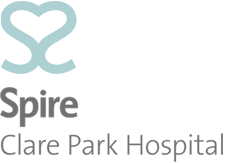Rosacea
Rosacea, or acne rosacea, is a common skin disorder leading to redness and pimples on the nose, forehead, cheekbones, and chin. The inflamed pimples and redness of rosacea can look a great deal like acne, but blackheads are almost never present. Rosacea is most common in white women between the ages of 30 and 60. When it occurs in men, it tends to be more severe and may eventually cause the nose to become red and enlarged (rhinophyma). Fair-skinned individuals and people who flush easily seem to be more susceptible to this condition.
Causes of Rosacea
Sun damages the supporting fibers of the small blood vessels just under the surface of the skin, allowing the vessels to stretch out (become permanently dilated). The damaged blood vessels leak fluid when flushing occurs, resulting in blotchy red areas. Swelling occurs, but is not usually so prominent to be very visible. The first sign most people see are small red pimples and pustules. The redness can come and go and may be sensitive to the touch. Eventually the redness and swelling can become permanent.
If progress is unchecked, the capillaries become visible through the skin's surface; these are called telangiectasis. They often start on the sides of the nose. In a fair, delicate skin predisposed to rosacea, anything that makes one flush will promote rosacea and telangiectasis. The more blood vessels one has near the surface of the skin, the more one is likely to flush and stay flushed.
Flushing triggers include: hot beverages, spicy food, alcohol (either topically applied or drunk), excessive prescription steroids, physical and mental stress, extremes of weather, harsh soaps, exfoliating creams, and hot baths. Controlling the flushing can allow one to control the rosacea, sometimes without using medication. Unfortunately, what aggravates one person's rosacea may have no effect on another's.
Rosacea can affect the eyes. How severely rosacea affects the eye is not related to how severe the facial rosacea is. Symptoms that suggest ocular rosacea include a feeling of dryness and grittiness in the eyes and inflamed bumps, known as chalazions, on the lids.
The eyelashes may develop scales and crusts, often misdiagnosed as seborrheic dermatitis. A persistent burning feeling, red eyes and light sensitivity suggest the more severe problem of rosacea keratitis. This rare complication can lead to with blindness without treatment. All patients with significant symptoms of ocular rosacea should be seen by an ophthalmologist for a thorough examination.
Telangiectasias (broken blood vessels) can be treated with electrocautery (burning the vessels with an electric needle). It gives good results for many people and is less expensive and more readily available than lasers. If a person has rhinophyma from the disorder, a laser can shave away excess tissue to restore a smoother appearance to the skin.
Treatment of Rosacea
Treatment includes avoidance of anything that makes one flush and known precipitants of flare-ups. Overheating-whether due to direct sun, excess clothing, hot foods-is uniformly a problem. Avoid hot showers, saunas, excessively warm environments, and extremes of weather (strong winds, cold, humidity).
Foods can also be a trigger, but for any particular type it usually affects no more than one third of rosacea patients. These include fermented products high in histamine (vinegar, yogurt, sour cream, dry cheeses, soy sauce, yeast extract), certain vegetables and fruits (aubergine, avocado, spinach, broad-leaf beans and pods, citrus fruits, tomatoes, bananas), spicy food, chocolate, vanilla, and liver. Other factors include prescription medications (vasodilators, topical steroids) alcohol, menopausal flushing, chronic coughing, and emotional stress and anxiety.
Treatment will control rosacea in most cases. It should be possible to control symptoms and keep rosacea from getting worse. Rosacea comes back in most of the patients in weeks to months of stopping treatment unless all trigger factors have been stopped.
The most effective treatments are oral tetracycline and similar antibiotics and low-dose oral Accutane. Mild cases can be controlled by gels or creams. Often, full doses of pills are needed only for a short while. Maintenance treatment can be intermittent doses or just topical creams. For rosacea of the eyes, warm compresses to lids (hot towel) for 5 minutes twice a day can be very helpful.


